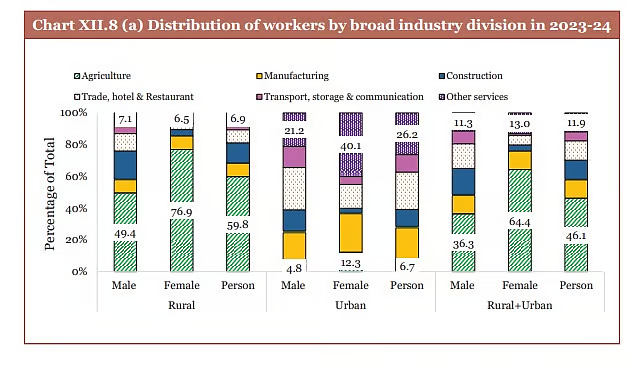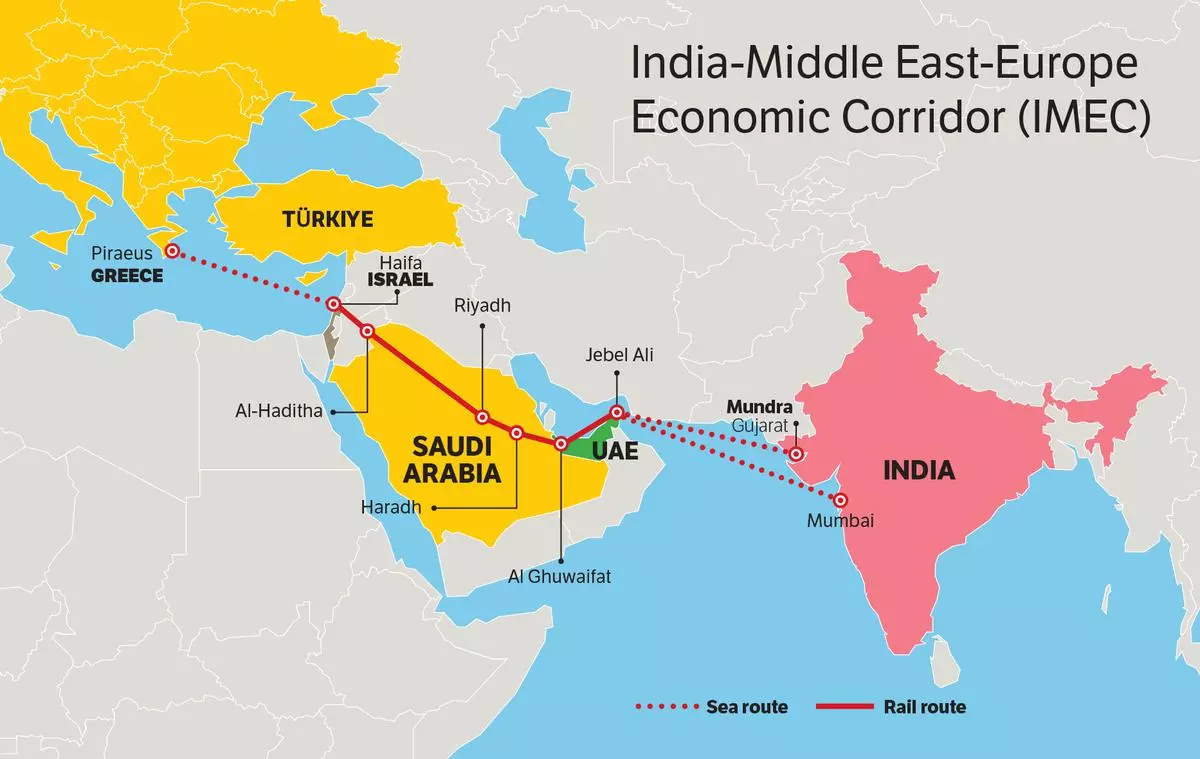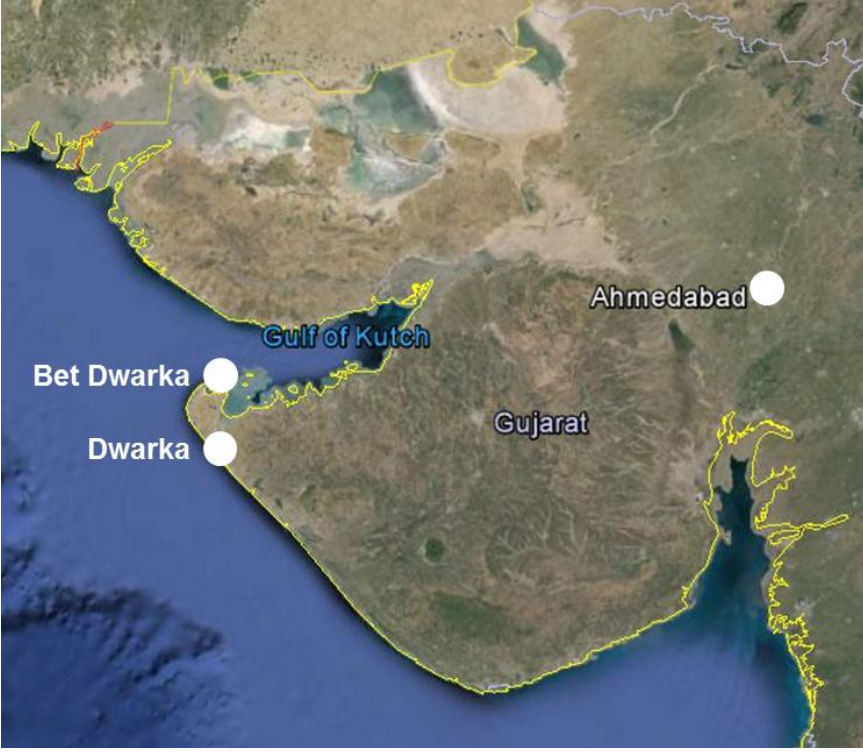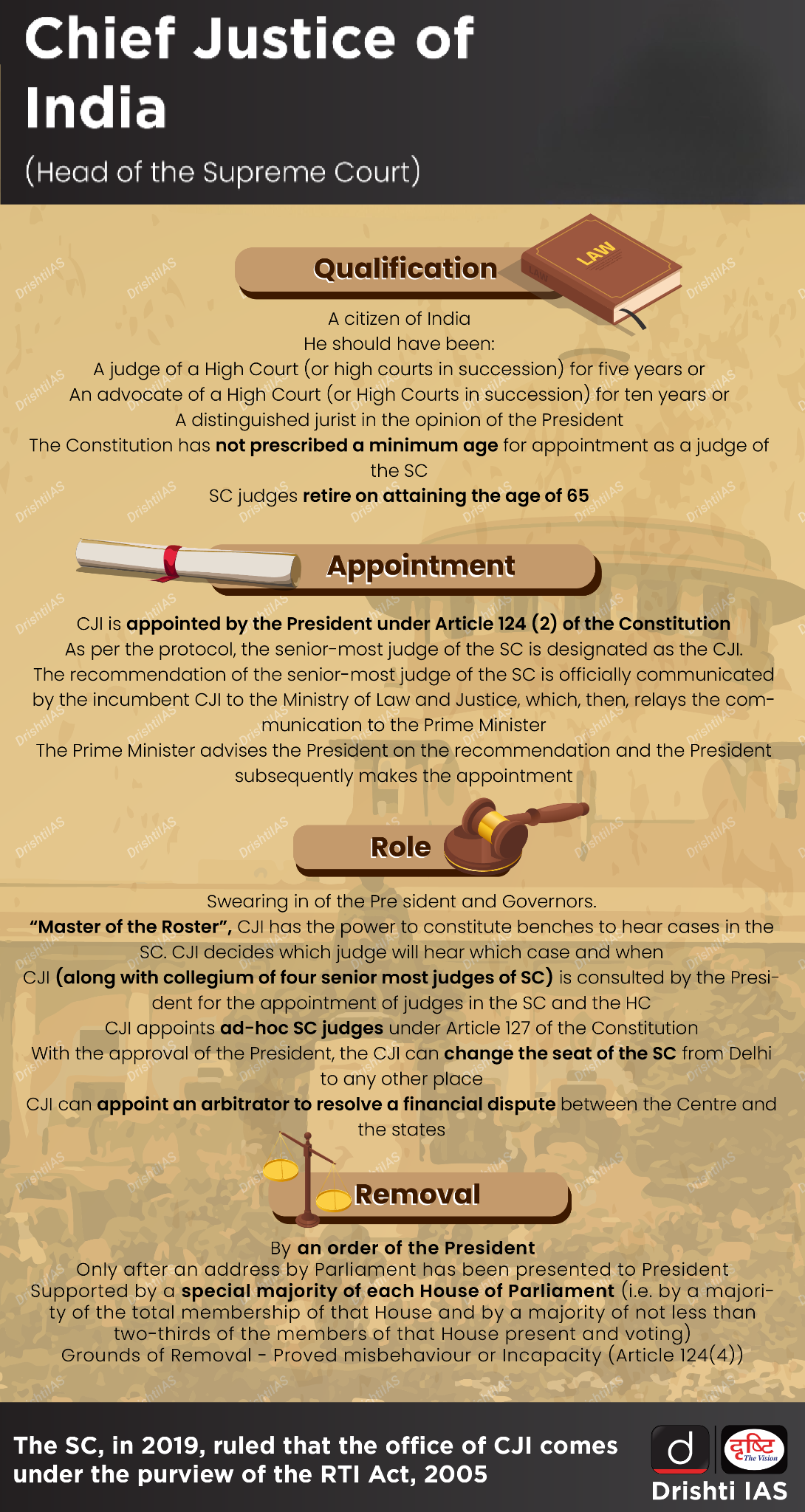Rising Informality of Women in Manufacturing Workforce
For Prelims: Informal Sector, Formal Sector, Skill India Mission, Digital Saksharta Abhiyan, GDP, Skill India Mission
For Mains: State of Women participation in Manufacturing sector in India, Challenges related to women labor participation, Key Initiatives to Increase Women Labor Force Participation.
Why in News?
The manufacturing sector, contributing approximately 17% to India’s GDP, is considered a key driver for economic growth under the vision of Viksit Bharat. However, women remain significantly underrepresented in the sector, particularly in formal employment, reflecting deeper structural and socio-economic challenges.
Why India Struggles to Generate Enough Formal Jobs?Click Here to Read: Reasons for Declining Formal Jobs in India |
What is the Current Status of Women in Manufacturing in India?
- Formal Sector: Women's share in formal manufacturing has declined from 20.9% in 2015-16 to 18.9% in 2022-23, with only 1.57 million women out of 8.34 million formal workers.
- Tamil Nadu employs the highest share (41%) of women, followed by Karnataka, Maharashtra, Andhra Pradesh, and Gujarat, together accounting for nearly 75% of all women in formal manufacturing.
- Gender disparity is high in Bihar, West Bengal, Chhattisgarh, and Haryana (less than 6% women), and even in industrialised states like Gujarat, Maharashtra, and Uttar Pradesh (less than 15% women).
- In contrast, southern states like Kerala, Karnataka, and Tamil Nadu show relatively better female participation.
- Women are mostly employed in textiles, apparel, and food processing, which make up 60% of female employment.
- Tobacco is the only formal manufacturing industry where more women are employed than men.
- Informal Sector: Women make up 43% of the informal manufacturing workforce, but are mostly employed in low-paying, low-skilled jobs without job security or benefits.
- Key sectors include wearing apparel and tobacco, with over 90% of the informal tobacco workforce being women.
- Gender gap remains high in states like Haryana, Uttar Pradesh, and Gujarat.
- In states like Telangana, Karnataka, and West Bengal, the gender gap is negative, indicating more women than men work in informal manufacturing.

What are the Key Challenges Hindering Female Labour Force Participation in India?Click to Read: Key Reasons for Low Female Participation |
Note
- The government aims to increase manufacturing’s share of GDP to 25% by 2025.
- It promotes manufacturing through schemes like Make in India to boost infrastructure and FDI, Production Linked Incentive Scheme (PLI) to incentivize key sectors, and Samarth to skill women in textiles.
- Skill India provides vocational training, while MUDRA Yojana offers collateral-free loans to women entrepreneurs in manufacturing.
What Steps can Increase Female Labor Participation in the Formal Manufacturing Sector?
- Education and Skill Development: Only 30% of women in manufacturing have completed secondary education (vs 47% of men), and just 6% have formal vocational training.
- To bridge this gap, women’s participation in Skill India Mission and similar initiatives must be expanded, with targeted upskilling in technical and engineering domains to improve access to skilled, better-paying jobs.
- Sectoral Diversification: Women in formal manufacturing are concentrated in a few sectors like textiles and food processing (60%).
- Diversifying their presence into sectors like automotive and electronics through targeted training and incentives is key to improving participation and opportunities.
- Creating Safe Work Environments: Creating safe and inclusive workplaces through hostels, transport, and childcare facilities can boost women’s entry and retention in manufacturing across states.
- Policy Interventions: Strengthening laws like the Maternity Benefit (Amendment) Act and Factories Act can improve working conditions and gender equality.
- To encourage more hiring of women in manufacturing, the government and industry should share the cost of maternity benefits, reducing the financial burden on employers.
Conclusion
Women in India’s manufacturing sector are mainly employed in low-paying, informal jobs with inadequate conditions. To bridge this gap, it is essential to enhance women’s education, skills, and workplace safety, while promoting their shift from informal to formal employment. Establishing an inclusive and supportive environment will empower women and contribute to India’s vision of becoming a "Viksit Bharat."
|
Drishti Mains Question: What are the challenges faced by women in India’s manufacturing sector, and what measures can be taken to enhance their participation and opportunities? |
UPSC Civil Services Examination, Previous Year Questions (PYQs)
Prelims
Q. Increase in absolute and per capita real GNP do not connote a higher level of economic development, if(2018)
(a) industrial output fails to keep pace with agricultural output.
(b) agricultural output fails to keep pace with industrial output.
(c) poverty and unemployment increase.
(d) imports grow faster than exports.
Ans: (c)
Q. Disguised unemployment generally means (2013)
(a) large number of people remain unemployed
(b) alternative employment is not available
(c) marginal productivity of labour is zero
(d) productivity of workers is low
Ans: (c)
Mains
Q. Most of the unemployment in India is structural in nature. Examine the methodology adopted to compute unemployment in the country and suggest improvements. (2023)
Q. “Success of ‘Make in India’ program depends on the success of ‘Skill India’ programme and radical labour reforms.” Discuss with logical arguments. (2015)
Q. “While we flaunt India’s demographic dividend, we ignore the dropping rates of employability.” What are we missing while doing so? Where will the jobs that India desperately needs come from? Explain. (2014)
India-Middle East-Europe Economic Corridor
For Prelims: India-Middle East-Europe Economic Corridor, G20, Partnership for Global Infrastructure and Investment, Belt and Road Initiative
For Mains: India’s infrastructure diplomacy, India-Middle East-Europe Economic Corridor, Role of geopolitics in economic development
Why in News?
The Union Minister of Commerce and Industry, at the High-Level Roundtable on Connectivity and Economic Growth in New Delhi, highlighted the India-Middle East-Europe Economic Corridor (IMEC) as a transcontinental initiative poised to redefine global trade dynamics and strengthen international economic cooperation.
What is the India-Middle East-Europe Economic Corridor?
- About: The IMEC is a strategic multi-modal connectivity initiative launched through a Memorandum of Understanding (MoU) during the G20 Summit 2023 in New Delhi. Signatories include India, US, Saudi Arabia, the United Arab Emirates, France, Germany, Italy and the European Union.
- The initiative is a part of the Partnership for Global Infrastructure and Investment (PGII), launched by the G7 in 2021.
- IMEC seeks to position itself as a viable alternative to China’s Belt and Road Initiative (BRI) by promoting transparent, sustainable, and debt-free infrastructure without compromising national sovereignty.
- Corridor Segments: IMEC has two parts the Eastern Corridor (India to Gulf) and the Northern Corridor (Gulf to Europe).
- Objective: To develop an integrated network of ports, railways, roads, sea lines, energy pipelines, and digital infrastructure aimed at enhancing trade between India, the Middle East, and Europe.
- Importance for India: IMEC is set to reduce logistics costs by up to 30% and transportation time by 40%, compared to the Suez Canal Maritime route making Indian exports more competitive globally.
- India's One Sun One World One Grid (OSOWOG) initiative aligns with IMEC’s energy goals, enabling India to harness solar and green hydrogen power from the Middle East, a region rich in renewable energy potential.
- IMEC includes energy pipelines, clean energy infrastructure, and undersea cables to enhance trade and energy cooperation.
- It will attract Foreign Direct Investment into India, particularly in infrastructure, logistics, green energy, and digital technologies, helping India access low-cost renewable energy and transition to a low-carbon economy.
- Status of IMEC: The project faced a major setback due to the Israel-Hamas conflict in 2023. Geopolitical instability in the Middle East has temporarily slowed momentum.
- Despite this, diplomatic engagement continues India and the UAE signed an Intergovernmental Framework Agreement (IGFA) in 2024, it focuses on operational cooperation and building a joint logistics platform for IMEC.
What are the Challenges Hindering the Progress of IMEC?
- Geopolitical Instability: The Gaza Conflict is a major concern, disrupting diplomatic normalization in West Asia, a key premise for IMEC's success.
- Regional volatility, including the Saudi-Iran rivalry and instability in Iraq and Syria, poses major threats to infrastructure development and supply chain security under IMEC..
- Lack of Clear Financial Commitment: The IMEC aims to mobilize USD 600 billion by 2027 to bridge infrastructure gaps, but lacks a clear financial roadmap and cost-sharing plan among stakeholders.
- Infrastructure development of this scale needs long-term investments (anywhere between USD 3 billion to USD 8 billion), which remain uncertain amid global economic slowdown.
- Potential for Trade Disruption: Examples like the Suez Canal blockage (2021) and Black Sea shipping disruption (due to the Russia-Ukraine conflict) illustrate how fragile maritime trade can be.
- Similar incidents in the IMEC region could disrupt reliability, while increased militarization and naval presence by extra-regional powers like China in the Indian Ocean raise fears of maritime contestation.
- Limited Geographical Inclusion: Key regional players like Turkey, Iran, Qatar, and Egypt are currently not part of IMEC, limiting its geopolitical and economic reach.
- The long-term success of the IMEC hinges on consistent political cooperation, which is challenging due to the differing national interests and alliances of the involved countries.
- Competition from Established Routes: The Suez Canal route is well-established, and IMEC's cost-effectiveness in comparison is still debated.
- IMEC could be a costlier alternative with no guaranteed returns if regional challenges persist.
- Technological Challenges: IMEC’s digital infrastructure, including undersea data cables, faces integration issues due to differing tech standards among member nations.
- Ensuring seamless connectivity is complex, and the risk of cyberattacks like the Colonial Pipeline incident in the US underscores the vulnerability of global digital systems.
How Can India Steer IMEC Towards Effective Implementation?
- Strengthening Domestic Infrastructure for IMEC Readiness: India can use this period of slowed progress in West Asia to strengthen its ports (Mundra (Gujarat), Kandla (Gujarat), and Jawaharlal Nehru Port Trust (Navi Mumbai)), develop economic zones along IMEC nodes, and upgrade domestic logistics for better integration into global value chains and positioning India as a reliable global supply chain alternative.
- Standardization of Trade Process: Efficient cross-border trade under IMEC requires all member countries to adopt frameworks like the India-UAE Virtual Trade Corridor to minimize paperwork and reduce delays.
- Towards Resilient Infrastructure: India can lead IMEC nations to adopt G20 Principles of Quality Infrastructure Investment (QII) principles to build sustainable, climate-resilient, and geopolitically adaptable projects.
- This approach can attract Public-Private Partnerships (PPPs) and private capital via green bonds and sustainable finance, easing pressure on national budgets.
- Enhancing Regional Security Frameworks: India can push for stronger security ties via Indian Ocean Rim Association (IORA) and Gulf Cooperation Council (GCC) to protect IMEC from terrorism, piracy, and cyber threats.
- Promoting Technological Integration: India can lead in digital connectivity by promoting Unified Payments Interface (UPI) based payment systems, undersea cables, 5G infrastructure, supporting e-commerce, fintech, and smart city initiatives while reducing the digital divide along IMEC.
India's Other Key Strategic Infrastructure Initiatives
- International North-South Transport Corridor (INSTC): It was proposed in 2000 to connect Russia’s Baltic Sea coast to India’s western ports via Iran.
- Russia, India, and Iran signed preliminary agreements in 2002 to develop the 7,200-km-long INSTC.
- It currently includes 13 members: India, Iran, Russia, Azerbaijan, Armenia, Kazakhstan, Kyrgyzstan, Tajikistan, Turkey, Ukraine, Belarus, Oman, and Syria, with Bulgaria as an Observer State.
- Chabahar Port Project: India, Iran, and Afghanistan signed a tripartite agreement to develop the Shahid Beheshti Terminal at Chabahar Port, marking India’s first foreign port project.
- The project aims to bypass Pakistan and provide India access to Afghanistan and Central Asia, enhancing transit trade between the three nations.
- India-Myanmar-Thailand Trilateral Highway: The project aims to create a road link starting from Moreh in India’s Manipur state, passing through Myanmar, and ending at Mae Sot in Thailand.
- Kaladan Multimodal Transit Transport Project: The project aims to connect Kolkata’s eastern seaport with Myanmar's Sittwe port by sea, enhancing trade and connectivity with Southeast Asia.
Conclusion
IMEC with India's leadership, promises to reshape global trade by enhancing connectivity and fostering regional cooperation. Establishing an IMEC Secretariat will be crucial in streamlining operations and ensuring the smooth execution of the project. Its implementation will drive sustainable economic growth and a new era of global prosperity.
|
Drishti Mains Question: Discuss the strategic significance of the India-Middle East-Europe Economic Corridor in reshaping regional geopolitics and trade dynamics. |
UPSC Civil Services Examination, Previous Year Questions (PYQs)
Prelims:
Q. ‘Belt and Road Initiative’ is sometimes mentioned in the news in the context of the affairs of (2016)
(a) African Union
(b) Brazil
(c) European Union
(d) China
Ans: (d)
61st Executive Committee Meeting of NMCG
Why in News?
At its 61st Executive Committee meeting, the National Mission for Clean Ganga (NMCG) approved key projects aimed at cleaning the river, curbing pollution at the source, and promoting sustainable development while preserving the Ganga’s ecological and cultural value.
What are the Key Initiatives Approved at the Executive Committee Meeting?
- Approved Projects: Sewerage Projects in Moradabad (UP), Arrah (Bihar), Kanpur (UP), and Pujali (WB) to prevent untreated waste from entering rivers.
- Nature-Based Solution Pilot: CAMUS-SBT plant installation in Shahdara drain (Delhi) for Yamuna rejuvenation.
- Research & Innovation: Launch of IND-RIVERS Collaboratory (NMCG–IIT Delhi–Netherlands) for intelligent river systems and urban river solutions.
- Cultural Heritage: Approval for the study of traditional wooden boat-making craft in the Ganga basin.
- Ecological Education: Development of DDA Biodiversity Parks as Knowledge cum Skill Development Centres for river conservation.
National Mission for Clean Ganga (NMCG)
- About: It was registered as a society on 12th August 2011 under the Societies Registration Act, 1860.
- It plays a crucial role in the rejuvenation and protection of the Ganga River.
- Legal Framework: It acted as the implementation arm of National Ganga River Basin Authority (NGRBA) which was constituted under the provisions of the Environment (Protection) Act (EPA),1986.
- After the dissolution of NGRBA in 2016, it is the implementation arm of National Council for Rejuvenation, Protection and Management of River Ganga (National Ganga Council).
- NGC ensures continuous adequate flow of water in the river and to prevent, control, and abate environmental pollution.
- Management Structure of NMCG: NMCG operates with a two-tier management structure and both are headed by the Director General (DG) of NMCG.
- Governing Council: Oversees the general policies and direction of the NMCG.
- Executive Committee: Authorised to approve projects with a financial outlay of up to Rs 1,000 crore.
What are the Other Government Initiatives Related to Ganga? 
- Namami Gange Programme: It is an Integrated Conservation Mission, approved as a ‘Flagship Programme’ by the Union Government in June 2014 to accomplish the twin objectives of effective abatement of pollution and conservation and rejuvenation of National River Ganga.
- Ganga Action Plan: It was the first River Action Plan that was taken up by the Ministry of Environment, Forest and Climate Change in 1985, to improve the water quality by the interception, diversion, and treatment of domestic sewage.
- Clean Ganga Fund: In 2014, it was formed for cleaning up of the Ganga, setting up of waste treatment plants, and conservation of biotic diversity of the river.
- Bhuvan-Ganga Web App: It ensures involvement of the public in monitoring of pollution entering into the river Ganga.
- Ban on Waste Disposal: In 2017, the National Green Tribunal banned the dumping of waste within 500 metres of a heavily polluted stretch of the Ganges river.
UPSC Civil Services Examination, Previous Year Question:
Q. Which of the following are the key features of ‘National Ganga River Basin Authority (NGRBA)’? (2016)
- River basin is the unit of planning and management.
- It spearheads the river conservation efforts at the national level.
- One of the Chief Ministers of the States through which the Ganga flows becomes the Chairman of NGRBA on rotation basis.
Select the correct answer using the code given below:
(a) 1 and 2 only
(b) 2 and 3 only
(c) 1 and 3 only
(d) 1, 2 and 3
Ans: (a)
Tamil Nadu Forms Committee to Review Centre- State Relation
Why in News?
Tamil Nadu has formed a three-member high-level committee to review Centre-State relations and recommend measures to strengthen state autonomy, focusing on constitutional provisions, power devolution, and state government autonomy.
What are the Core Issues in Centre-State Relations?
- Erosion of Legislative Powers: Many subjects have been moved from the State List to the Concurrent List, reducing states' control over crucial areas like education and health.
- The 42nd Amendment Act of 1976 moved five key subjects like education, forestry, wildlife and bird protection, the administration of justice, and weights and measures from the State List to the Concurrent List , following the Swaran Singh Committee's (1976) recommendation.
- National Policies: States highlight that National policies often override state-specific policies, limiting the autonomy of states to decide what is best for their people.
- Tamil Nadu raises concerns that the Union government's implementation of the National Eligibility-cum-Entrance Test (NEET) for medical admissions has overridden the state's policies that prioritized opportunities for students from marginalized communities.
- Similarly, the National Education Policy’s three-language formula and the withholding of funds for Tamil Nadu’s education programs have sparked resistance from the state government, arguing for the preservation of its linguistic and cultural uniqueness.
- Fiscal Disparities: States argue that the Goods and Services Tax (GST) system has led to revenue loss, leaving them with less financial freedom to implement local policies.
- Tamil Nadu argues that for every rupee it contributes to the Centre, it gets back only 29 paise, discouraging its role in driving national economic growth and making it feel penalized for its success.
- Reduced Representation: States like Tamil Nadu feel penalized by the delimitation process, which could reduce their representation in Parliament despite proactive population control measures.
- Exclusion from Key Decisions: States believe they are often excluded from important national decisions such as demonetization (2016), undermining the participatory governance envisioned in India’s federal framework.
What are the Key Recommendations of Various Commissions Regarding Centre-State Relation?
- Rajamannar Committee (1969): Formed by Tamil Nadu, the Rajamannar Committee was the first state-level initiative to review Centre-State relations.
- It criticised the growing centralisation of power that undermined state autonomy.
- Though the Constitution appeared federal, the committee said it functioned unitarily, turning states into administrative arms of the Centre.
- It flagged Articles 256 (States must comply with laws made by Parliament), 257 (allows Union to direct states in certain cases), 365, and 356 for enabling undue Centre control and recommended repealing Article 356.
- The committee called for strengthening the Inter-State Council(ISC) to restore federal balance.
- Administrative Reforms Commission (1969): Recommended establishing an ISC under Article 263 and appointing experienced, non-partisan individuals as Governors to promote cooperative federalism and impartiality in state administration.
- It advocated greater delegation of powers and financial resources to States to reduce their dependence on the Centre, along with regulated deployment of Central armed forces.
- Sarkaria Commission (1983): Recommended that Article 356 should be used only in rare cases, as a last resort, with prior warnings to the State and clear justification.
- Recommended making the ISC a permanent body, leading to its formal establishment in 1990 through a Presidential Order.
- It advocated for prior state consultation on central laws affecting state subjects, formula-based central grants, and greater autonomy in deploying central forces.
- Punchhi Commission (2007): Recommended that states be consulted via the Inter-State Council before introducing bills on Concurrent List subjects and sought regulation of the Union's treaty-making power on State List matters.
- This would enhance state representation in their internal affairs and promote cooperative federalism.
- Suggested revisions in the allocation of financial resources, with more autonomy for states in fiscal matters.
| Read more: Frictions in Centre-State Relations |
|
Drishti Mains Question: Discuss the challenges to state autonomy in India’s federal system and evaluate the recommendations of the various Commissions in addressing these issues. |
UPSC Civil Services Examination Previous Year’s Question (PYQs)
Mains
Q. Though the federal principle is dominant in our constitution and that principle is one of its basic features, but it is equally true that federalism under the Indian Constitution leans in favour of a strong Center, a feature that militates against the concept of strong federalism. Discuss. (2014)
Registration of Births and Deaths in India
Why in News?
The Registrar General of India (RGI) has advised government and private hospitals to promptly report births and deaths. RGI noted that despite a 90% registration rate, many institutions fail to report within the mandatory 21-day period, undermining the goal of 100% universal registration.
What are the Provisions Regarding Registration of Births and Deaths?
- Mandatory Registration: As per the Registration of Births and Deaths (RBD) Act, 1969 (amended in 2023), all births and deaths must be registered. Registration must be done at the place of occurrence of the event.
- Registration Functionaries: The RGI oversees national registration, with Chief Registrars and District Registrars managing state and district-level implementation. Local Registrars handle birth and death registrations and certificates.
- Civil Registration System: The RBD Act, 1969 mandates that, starting from October 2023, all registrations must be done digitally through the CRS.
- Time Period for Reporting: The prescribed time for reporting birth, death, or stillbirth (death of a fetus after 28 weeks of pregnancy, but before or during birth) is within 21 days from the date of occurrence. Late fee applicable after 21 days.
- Births and Deaths Outside India (for Indian Citizens): A child born outside India must register their birth under the Citizenship Act 1955 and the Citizens (Registration at Indian consulates) Rules, 1956.
- However, under Section 20 of the RBD Act, if the parents return to India with the intent to settle, the birth can be registered within 60 days from the child's arrival in India.
- Deaths of Indian citizens abroad are registered at the Indian Consulate under the Citizenship Act, 1955, and are deemed valid under the RBD Act, 1969.
- Penalty for Non-compliance: Under RBD Act, negligence by registrars in registering events is punishable with a fine up to Rs 1,000.
Registrar General of India
- The RGI, established in 1949 under the Ministry of Home Affairs, is responsible for overseeing population data collection, including the decennial Census of India and the Linguistic Survey of India.
- The RGI ensures the implementation of the RBD Act, 1969, and manages the CRS for continuous birth and death registration.
- It also maintains the National Population Register (NPR) to record demographic details of all usual residents.
- RGI is headed by a senior civil servant, typically of Joint Secretary rank, the RGI plays a crucial role in demographic planning and policy formulation.
Dwarka & Beyt Dwarka
The Archaeological Survey of India (ASI) has launched a scientific study to explore submerged archaeological remains at Dwarka and Beyt Dwarka in Gujarat.
- ASI findings since 1963 reveal submerged structures, stone jetties, anchors, and fortified walls, indicating a prosperous ancient port.
- Dwarka: Dwarka (where Lord Krishna settled after leaving Mathura), situated at the mouth of the Gulf of Kutch, is one of the Char Dham pilgrimage sites.
- Religious Significance: As per legend, Krishna reclaimed land from the sea to establish Dwarka, making it the first capital of Gujarat.
- The town houses the Dwarkadhish Temple (Jagat Mandir), a major Krishna Bhakti shrine rebuilt in the 16th century after destruction by Mahmud Begada, and the Sharada Peeth, the western matha established by Adi Shankaracharya.
- Beyt (Bet) Dwarka: Beyt Dwarka (Shankhodhar) island, located 30 km off the coast and accessible via Okha port, is identified as Antardvipa in the Mahabharata.
- Guru Vallabhacharya is associated with a temple found on the island.
- Excavations on the island trace habitation back to the Harappan and Mauryan periods.
- In medieval times, the area was under the Gaekwads of Baroda, briefly seized by the Vaghers in 1857.
- The Sudarshan Setu, India’s longest cable-stayed bridge, was inaugurated in 2024, improving access.
| Read More: Sudarshan Setu |
Justice B.R. Gavai Set to Become the 52nd CJI
Chief Justice of India (CJI) Sanjiv Khanna has recommended Justice Bhushan Ramkrishna Gavai to be appointed as the 52nd CJI.
- Justice B.R. Gavai, currently is the second-most senior Supreme Court judge and will become the 2nd Dalit CJI after Justice K.G. Balakrishnan (2007).
- Key Judgments by Justice B.R. Gavai: Upheld 2016 demonetisation and he is a part of the Bench that upheld abrogation of Article 370.
- He was part of the Constitution Bench that struck down the Electoral Bonds Scheme (Association for Democratic Reforms v. Union of India).
- In the State of Punjab v Davinder Singh (2024), he advocated applying the creamy layer principle to SCs/STs to ensure "real equality" in affirmative action.
Chief Justice of India
- A Supreme Court judge, including the CJI, is appointed by the President under Article 124 (2).
- The senior-most judge is designated as CJI based on length of service ( it is customary practice, not a legal requirement ).
- To qualify as CJI, one must be a citizen of India, have served as a High Court judge for 5 years or as an advocate for 10 years, or be a distinguished jurist in the President’s opinion.
- The CJI can only be removed by the President after an address by Parliament, supported by a special majority in both Houses.
| Read more: Appointment of Chief Justice of India |
Leptobrachium aryatium
A study in Assam has led to the discovery of a new frog species, Leptobrachium aryatium, named after Arya Vidyapeeth College in Guwahati.
- Leptobrachium aryatium: It has been identified in the Garbhanga Reserve Forest. The species is noted for distinctive features, including fiery orange-and-black eyes, a unique reticulated throat pattern, and a smooth, rhythmic call at dusk.
- The frog was first identified in 2004 as Leptobrachium smithi, but recent molecular and morphological studies confirmed it as a new species.
- The genus Leptobrachium, consisting of 38 species of stocky frogs with broad heads, short hind limbs, and distinctively coloured eyes, is found across Southern China, India, the Sunda Shelf, and the Philippines.
- Garbhanga Reserve Forest: Situated on the southwestern side of Guwahati, Assam, near the Assam-Meghalaya border. The Garbhanga Reserve plays a crucial role in regulating Guwahati’s climate and water systems, and it supports a variety of wildlife, including elephants, butterflies, rare birds, reptiles, and amphibians.
- It faces threats from urban expansion and habitat destruction.
| Read more: Agroforestry's Impact to Endemic Frogs |




